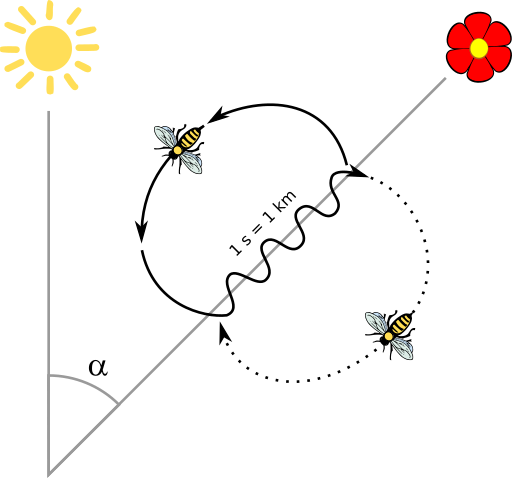As a species, humans have developed complex systems of communication. However, no one is born with the skills to speak or write immediately. When a baby cries, they are telling us that something may be wrong, but they can’t tell us exactly what’s up. As they grow, they learn how to talk, write and interact with others. These language systems are more complex and can convey detailed information, and as they are largely picked up from the people around us, they are examples of social learning. Whereas the compulsion to communicate is intrinsic, the rules of each system, or language, must be learnt.
But what about honeybees? As honeybees form highly structured communities, communication is a requirement. The most distinct and complex method is that of the forager bee- the waggle dance. But is this physical language learnt, or do bees emerge from the cell with a competence on the dance floor that would have put Michael Jackson to shame?
What exactly is the waggle dance?
The waggle dance is a series of defined movements which communicate useful information for foragers, such as the distance and direction of a source of food, and its quality. The complex dance steps were decoded by Professor Karl von Frisch in 1973, for which he won the Nobel Prize in Physiology.
Dance steps and meaning
The dance is performed in a repetitive figure eight movement. The forager positions herself perpendicular to the sun in the direction of the food source, to show the way. In the centre of the figure eight movement, she will vibrate or ‘waggle’, to indicate how fruitful the food source is.
The duration of the dance indicates the distance to the food source. The longer the dance, the further the food.
 Schematic drawing of the waggle dance. Important parameters are the angle α, the excitement of the waggling and the time per dance iteration.
Schematic drawing of the waggle dance. Important parameters are the angle α, the excitement of the waggling and the time per dance iteration.
For such a complex yet vitally important method of communication, the question long remained; to what extent is this system learnt, or innate?
Learnt or instinctive?
A team of researchers from the University of California and the Chinese Academy of Sciences conducted an experiment to learn more about the role of social learning in honeybees. They began by creating two colony groups. The first consisted of young novice bees (just one day old), that had never been exposed to the waggle dance before. The second group consisted of both novice and more mature bees (20 days old), that had experience with the waggle dance.
The hives were then placed 150 meters away from a feeder of sugar water, which allowed the researchers to assess the accuracy of the bees' dances. The team observed the first dances of novice bees in both the novice and mixed colonies, and then observed them again after another 20 days to compare the progress.
The results
During the early days, the bees from novice-only hives did perform the waggle dance, however they were generally more disordered. They overestimated the distance of the food source and were less accurate in communicating direction compared to the novice bees from the mixed colonies.
After 20 days, the bees from novice-only hives had seen an improvement in their directional errors, and their dances were more coordinated. However compared to the novice bees from mixed colonies, there were still larger waggle angle divergence errors and they were never able to correctly encode distance.
This suggests that the waggle dance is indeed innate, as the novice honeybees were able to perform the dance despite never having seen it before. However, social learning plays a significant role in the accuracy of the communication, as the bees from mixed hives were able to learn the steps more accurately.
Even after the 20 day period, when the novice bees had gained foraging and dancing experience, they were never able to dance as well as those from mixed colonies, highlighting the importance of social learning early in life.
This study adds to existing evidence of social learning in honeybees (such as the presence of honeybee dialects) and is one of the most intricate examples outside of the human species.
Sources
Social signal learning of the waggle dance in honey bees
https://www.science.org/doi/10.1126/science.ade1702
Complex Learned Social Behavior Discovered in Bee’s ‘Waggle Dance’
https://today.ucsd.edu/story/complex-learned-social-behavior-discovered-in-bees-waggle-dance